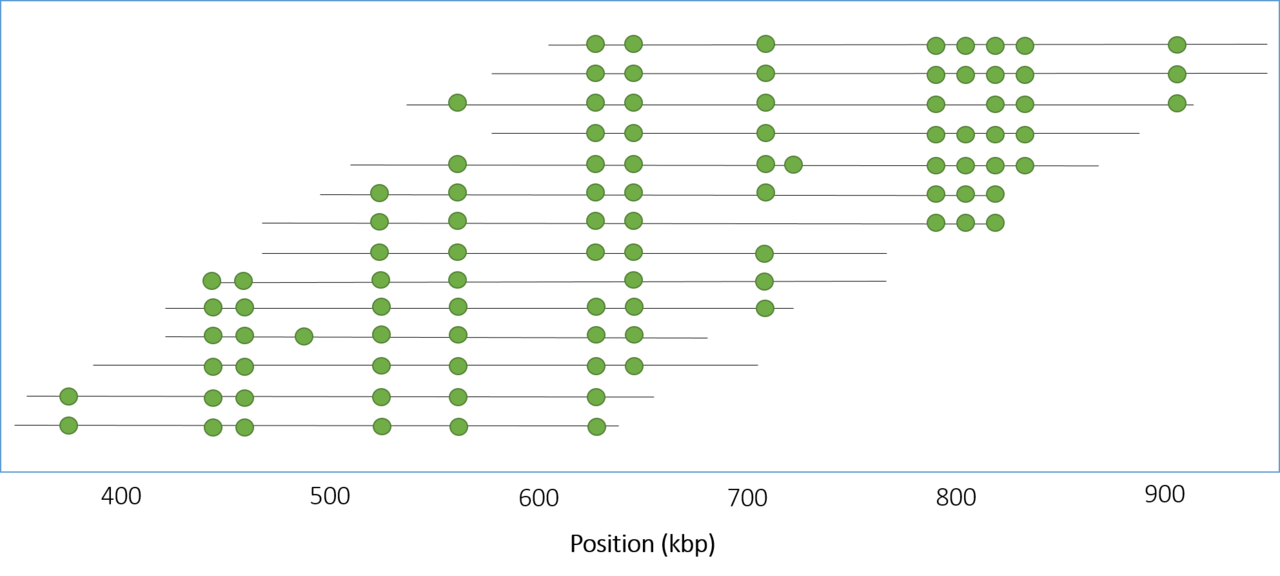Optical Mapping

Bionano Optical Mapping can be used for the detection of large structural variants (> 500 bp) in eukaryotic genomes and the improvement of de novo genome assemblies.
It requires extremely pure and high molecular weight (> 150 kb) DNA, which requires isolation with special protocols. Purified DNA is labeled with a fluorescence dye, which binds to specific short nucleotide sequences. This results in a unique fluorescence pattern for each individual genome, like a barcode (s. Fig. 1).
Comparison of these barcodes among different samples, e.g. in human trio analysis for the detection of rare genetic disorders, enables the detection of large structural variants. Because the nucleotide sequences of the labeled DNA stretches are known, it is also possible to align the optical mapping against an assembled genome in order to arrange contigs and obtain an improved genome assembly.
The GTL currently does not offer routine optical mapping services. DNA extraction according to Bionano standards, DNA quantification and labeling with the fluorescent dye (DLS labeling) as well as loading of the Bionano Saphyr device can be carried out on request on a cooperation basis in individual cases. Of course, an analysis of the data is also possible with the Bionano Access software.

